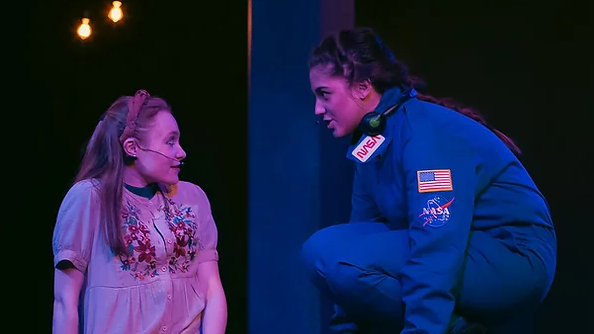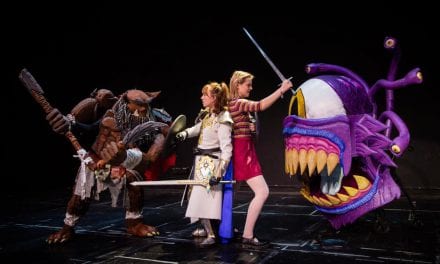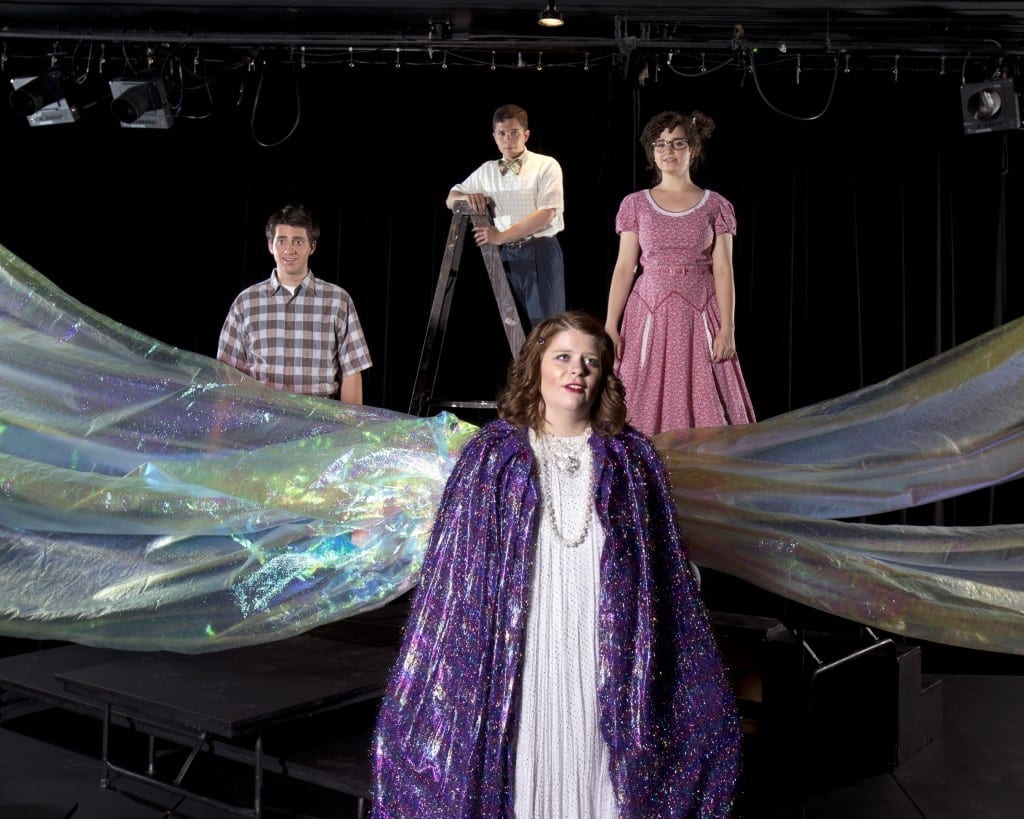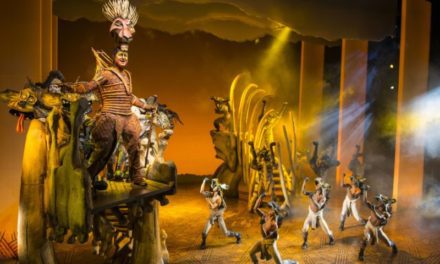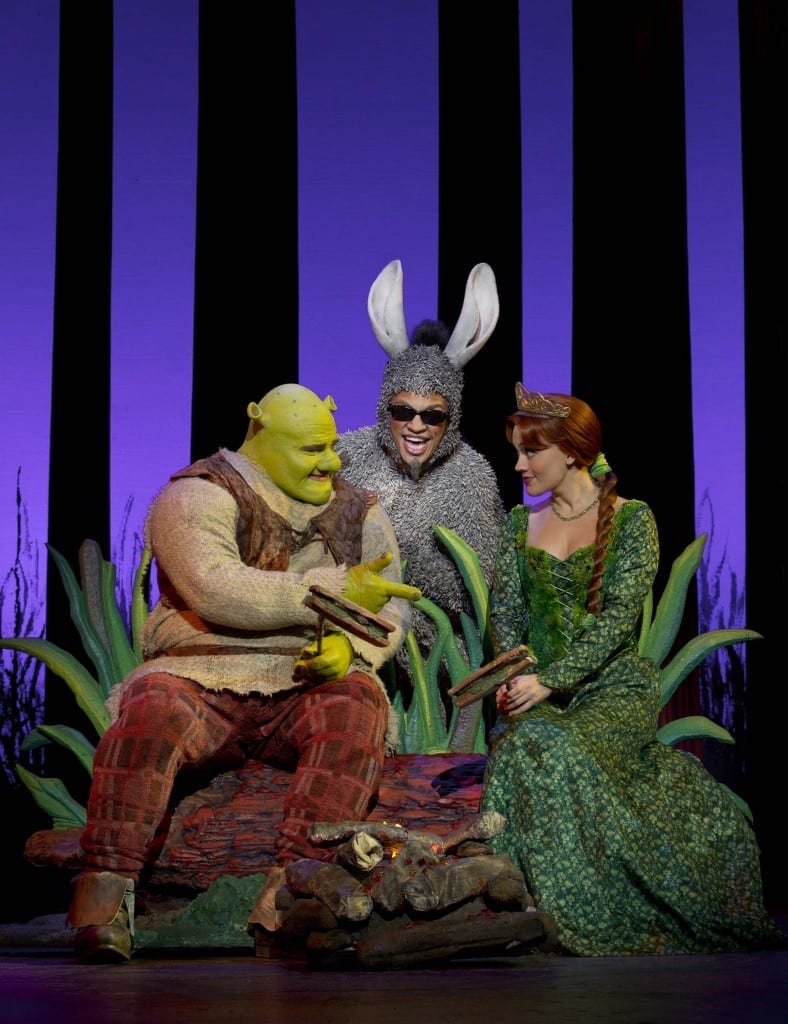OGDEN — Good Company Theatre initiates an amazing lift off for the new play To Saints and Stars, written by Jordan Ramirez Puckett and directed by Alexandra Harbold, with a developmental production. This thoughtful piece of art made me stop and wonder where the world is heading and who will be society’s Savior. Will scientists pull the world out of its spiral of increasing natural disasters? Will faith in God — or any religion, really — matter in future years? What will space exploration and technology look like in the decades to come? Can women ever break free from the patriarchal society that has dominated earth for centuries? Can a woman of faith be considered strong?
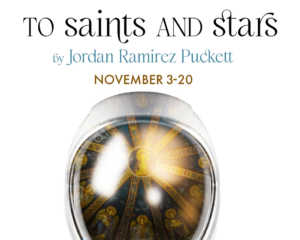
Show closes November 20, 2o22.
Set in a not-so-far future where the world is in danger of the devastating effects of global warming, two best friends, Zoe and Sophia, are each struggling to find a way to make an impact and those around them — yet in two completely different ways. Sophia is a candidate in the NASA space program determined to prove her worth and be picked for a mission to Mars. Zoe, on the other hand, is the wife of a Greek Orthodox priest who is filled with strong faith and a desire to serve others in the struggling world she lives in. However, the two are pulled apart by their beliefs in what can save the world and who to put their faith in. Sophia struggles to find joy in the news that Zoe is pregnant, while Zoe is baffled about Sophia’s desire to be chosen for a mission to go to another planet.
With a small cast of only four actors, three voiced characters, and a simple set, the storytelling and acting in this production create a very moving play. Harbold brought together a cast of strong and talented actors who were able to skillfully bring these new characters to life. 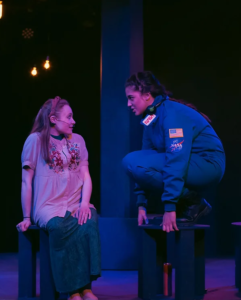 Chelsea Jurkiewicz plays the role of the faithful Zoe Cardenas as a woman who is devoted to her religion and husband. Zoe, however, is also a woman who is reaching for ways to extend past social limitations. Jurkiewicz is sweet and persuasive in her role as a friend and wife, yet fierce and brave as she portrays Zoe standing up to Keith. Jurkiewicz’s performance brings Zoe to life as a very relatable character as she asks, “Is it wrong to want a little of my own that says I’m more than just your wife?”
Chelsea Jurkiewicz plays the role of the faithful Zoe Cardenas as a woman who is devoted to her religion and husband. Zoe, however, is also a woman who is reaching for ways to extend past social limitations. Jurkiewicz is sweet and persuasive in her role as a friend and wife, yet fierce and brave as she portrays Zoe standing up to Keith. Jurkiewicz’s performance brings Zoe to life as a very relatable character as she asks, “Is it wrong to want a little of my own that says I’m more than just your wife?”
Also starring is Kassandra Torres as Zoe’s best friend, Sofia Wilson. Torres is focused and all business as Sofia strives to become the next astronaut chosen for a mission. Sofia’s drive is visible when she is in training exercises, yet her insecurities are brought forward when she gets home and is able to talk with her best friend. Torres shows the distraught feelings of many people as she asks, “How did we let the world get to this?” The interaction between the two friends at the end with their lines intertwined to finish each other’s thoughts was a piece of beautiful playwriting.
Supporting the main storyline of the two best friends were Alvaro Cortez as Zoe’s husband, John, and Alex Smith as Ken Roberts, another NASA astronaut. Cortez is serious as John tries to lead a new congregation which has strong traditional and patriarchal beliefs. The love and care that John has for his wife and his growing family is seen in his actions and distress during the baby’s delivery.
Smith brings comedy to the evening as he enacts the famous shower scene from Psycho going all in with sound effects and an over-the-top death on the floor. Roberts’s charming demeanor alongside his fiery temper and simple superstitions make him a likable character. Not only is the role comedic, but Smith was also able to pull off serious aspects, as he claimed, “No one is promised tomorrow, the least of which, us.”
Performing in a black box theatre creates a greater connection between the audience and the characters. The round set designed by Kristen Flores was set with round stools and round chairs, all painted the same dark color. Gold circles surround the stage with an orbital line connecting them. The roundness of the stage, the set, and the painting was symbolic of the roundabout relationship between science and religion. The traditional rituals and beliefs from centuries past and the forward-facing technology and innovation of the future move together in a cycle in this ever connected world. Many different types and shapes of industrial Edison bulbs hung from the ceiling, creating an effect of stars in the night sky. Lighting designer Darren Maxfield used the different colors of lighting and his effects to simulate scene changes and emphasize the characters’ strong emotions. For example, a bright flash of light hits an effective chord during the launch of the spaceship.
Sound designer Lydia Pearce strengthened the launch with rocket sound effects. The voice effects for the artificial intelligence assistant in Sophia’s home were very good and reminded me of devices like Alexa can be helpful and frustrating at the same time. The strong voices of the NASA Commander (played by Robert Scott Smith) and Keith (played by Aaron Adams) in the theater bring these intimidating and authoritative figures to life without having them step on the stage.
Due to language and a strong indication of sexual, physical, and emotional abuse from a domineering father, To Saints and Stars is created for a more mature audience. Bright flashes of light and ceremonial smoke are also used during the production. For the safety of the performers and other audience members, patrons are asked to wear a mask.
Overall, To Saints and Stars was a very thoughtful and impactful play with an interstellar performance. This thought-provoking play left me wondering where will the world be in the future. Will humans find a way to save the planet or will they look to the stars for retreat? Will the faith in God and a creator be vital in the future? Will there be miracles, or mere coincidences? To Saints and Stars does not answer all these questions, but posing them makes the night fascinating and entertaining.

